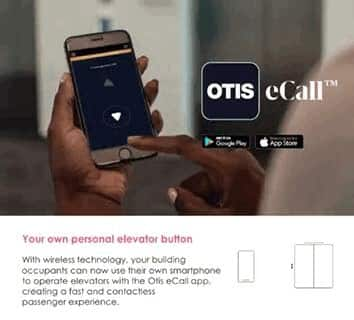



“Living with the virus” also means taking elevators. Stairs are not an option for those living or working in skyscrapers. Elevators it is.
The coronavirus outbreak has pushed the elevator industry to fast track its embrace of technology at a time when keeping the virus at bay is the biggest concern.
"The elevator industry was at the cusp of a transformation. Now because of COVID-19, which has changed the customer perception, the transformation has been advanced," said Sebi Joseph, President, Otis India, the local unit of the world's oldest and largest maker of elevators.
Here is a peek into what lies ahead. You have just arrived at one of those skyscrapers for a meeting. As you walk into the building, you open an app on your phone that uses Bluetooth to “call” an elevator. As you walk in, you feed the floor number in the app.
An elevator is waiting for in the lobby. Inside the “cab”, a fan integrates with an ion-generator and ultraviolet lamp to kill germs and filter dust.
The elevator pings that your floor has arrived. The doors open and you walk out. Through the “journey”, you didn’t press any buttons, other than those on your phone.
And this is how an elevator ride could look like in a post-coronavirus world.

Some of these features, once limited to feel-good brochures, are already available. For instance, one can use the “destination dispatching system”, which assigns people travelling to nearby floors to the same car.
"At Otis, we will be launching remote maintenance by the end of this year. Earlier, it was planned for the mid of next year. We have advanced it," Joseph told Moneycontrol.
On the back end, the focus is now on remote maintenance, which limits the need for mechanics and engineers to come to the site for work.
Right from real-time monitoring of an elevator's performance to coordinating with team members and supervisors, everything will be done virtually. This again reduces “touches”, and limits the need to gather.
The spineJoseph calls elevators the “spine” of a building. The description is apt as rapid urbanisation has led to a vertical expansion in metros. Mumbai, India's commercial capital, is now a city of skyscrapers and so are many others.
The demand has made India the second-largest market in the world for elevators and maintenance after China.
"The gap between the two countries is wide. While the annual demand in China is about 5 lakh units, in India, it's about 50,000," says Joseph.India has a total of about 5 lakh installations.
For Otis, which installed India's first lift in Kolkata's Raj Bhavan in 1892, growth has been fast. "While the industry on an average grew by about 4.5 percent, we grew by 15 percent," says Joseph. Much of the growth was driven by the real estate sector, mainly the residential space that makes up for nearly 80 percent of the demand for elevators in India.
Though the growth in the sector tapered in the last couple of years, COVID-19 has now disrupted the sector. "It is a bit too early to say how the rest of the year will pan out. But surely, everyone is impacted," said Joseph.
The silver lining though will be increased client interest in elevators with “safety features”. The higher cost, says the Otis executive, will not deter customers. "Safety has become the paramount now," he says.
Discover the latest Business News, Sensex, and Nifty updates. Obtain Personal Finance insights, tax queries, and expert opinions on Moneycontrol or download the Moneycontrol App to stay updated!
Find the best of Al News in one place, specially curated for you every weekend.
Stay on top of the latest tech trends and biggest startup news.